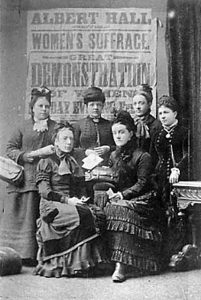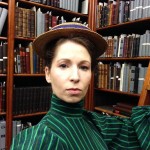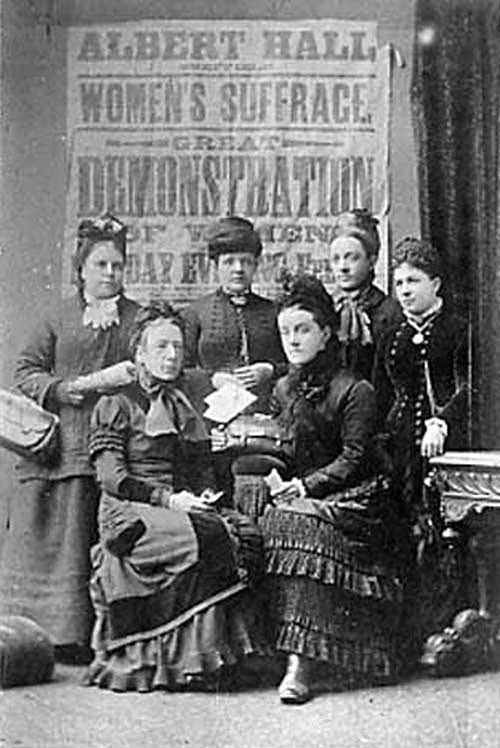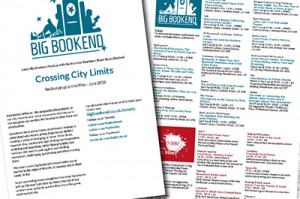
Chris Nickson tells us how Leeds women led the way, right from the beginning, in the fight for women’s right to vote.
Yorkshire led the way in the 19th century fight for women’s suffrage. The first petition to Parliament, in 1832, came from Mary Smith who lived in Stanmore. The idea of a woman asking for the vote was laughed out of the Commons. In 1851, a group of women in Sheffield formed the Sheffield Female Political Association, wanting the vote, but the group seemed to dissolve quickly with little achieved.
1866 saw the first national petition demanding that women should have the right to vote. Interestingly, Leeds had more signatories than anywhere else. According to Elizabeth Crawford, the author of The Women’s Suffrage Movement in Britain and Ireland: A Regional Survey, much of that might have been due to Ellen Heaton who canvassed tirelessly for names around Woodhouse.
Heaton herself lived in prosperous Woodhouse Square (which still stand by the bottom of Clarendon Road) but most of the women she persuaded to sign the petition weren’t as prosperous. Martha Fenton of Woodhouse Street was a laundress; Emma Tingle, who lived on the same street, was a charwoman. Sarah Fisher of Cemetery Street kept a lodging house, while Charlotte Alderson of West End Terrace was the wife of a cow keeper, and Martha Smithson made her living as a cloth fettler. A few were in slightly better circumstances (the Loftuses of Woodhouse Lane, for example, who owned a shop selling baby linens), but most were poor, barely getting by. Heaton was thorough, but what is fascinating is that women of all classes felt impelled to sign. They’d had enough; were ready to stand up and be counted.
Two years later Leeds presented its own petition on the topic to Parliament, and in 1870 another women’s suffrage petition was presented by the Leeds Reform League. By 1871 Leeds had its own Women’s Suffrage Society, with Mrs Catherine Buckton as secretary. By then, though, some women had already enjoyed their first vote, for the new School Board. In 1873 Mrs Buckton became the first woman elected to the board.
Unable to combine both jobs, Buckton relinquished secretary duties of what had become the Yorkshire Women’s Suffrage Society to Mrs. Alice Cliff Scatcherd – a woman of some renown in Morley.
In Leeds much of the support was from the working class, and subcommittees were set up around town, notably in very deprived areas like Hunslet, Holbeck, and Central Leeds, all of which presented petitions demanding women’s suffrage.
But it wasn’t until 1890 and the re-founding of the Leeds Women’s Suffrage Society that things truly began to gain a head of steam. The time was right. Building on the foundations of writers like Mary Gaskell and Charlotte Brontë, this was the decade of the ‘New Woman’ as authors like Sarah Grand and Thomas Hardy spoke out against society’s expectations for gender. In journalism, pieces like W.T. Stead’s The Maiden Tribute of Modern Babylon (about child prostitution) and The Bitter Cry of Outcast London were part of a general change in attitude which would find echoes in the pamphlet called Hypnotic Leeds, produced by the brand new Independent Labour Party in 1894.
It all had a long way to go before universal suffrage became law in 1928, but the storm was gathering. After the turn of the century the suffragists would become the suffragettes. The focus would shift south. But the foundations had been laid here.
 We are delighted to be hosting an exclusive preview of Chris Nickson’s first play, The Empress on the Corner, at the Leeds Big Bookend Festival 2016.
We are delighted to be hosting an exclusive preview of Chris Nickson’s first play, The Empress on the Corner, at the Leeds Big Bookend Festival 2016.
Annabelle Harper features in the Inspector Tom Harper mysteries set in the 1890s – Gods of Gold, Two Bronze Pennies, Skin Like Silver – written by Chris Nickson, in addition to several short stories. In this one-woman play, featuring Carolyn Eden as Annabelle, she tells her story. Growing up on the Bank, the poorest part of the city, the hopeless life of mills or maids for the girls there. The circumstances that made her landlady of the Victoria public house in Sheepscar, also running three bakeries and becoming the Empress on the Corner. Then her political awakening, speaking out, speaking loud, the determination to see that her own daughter has more but she never forgets how life remains for so many.
A one-woman play starring Carolyn Eden, written by Chris Nickson, Saturday June 4, Leeds Central Library, 2.30 pm, as part of Leeds Big Bookend Festival 2016. There will be a Q&A afterwards with Chris, Carolyn and the play’s Director.
Tickets £5 + VAT. Click here.
You can download the The Leeds Big Bookend Festival 2016 programme here.


